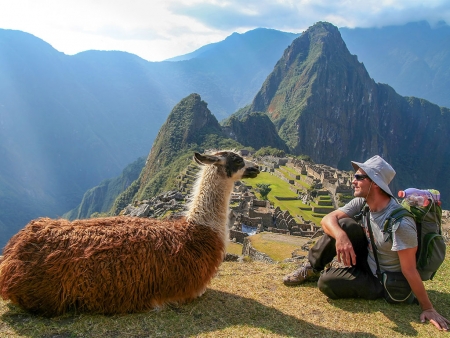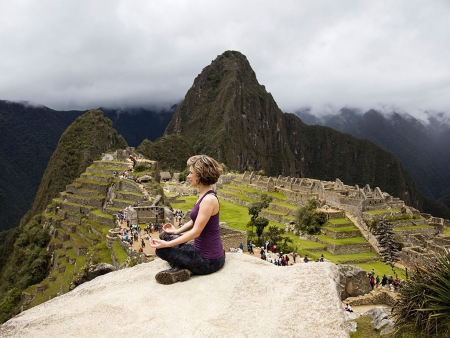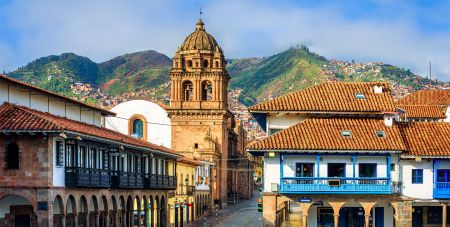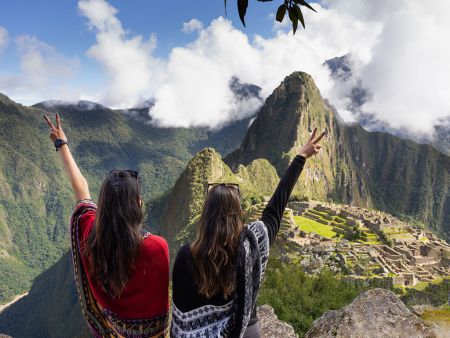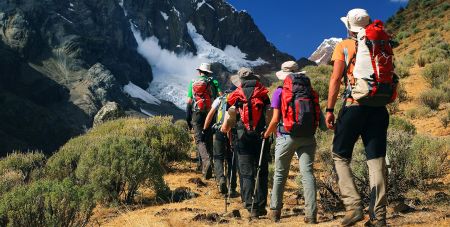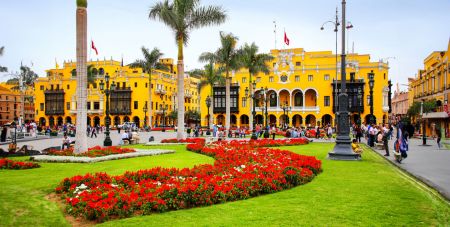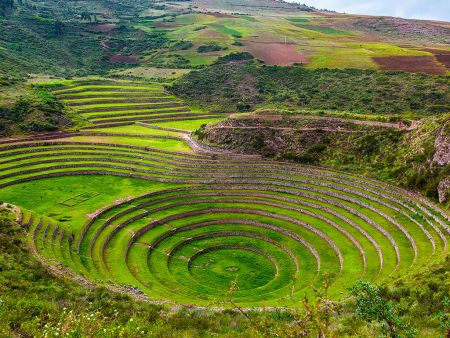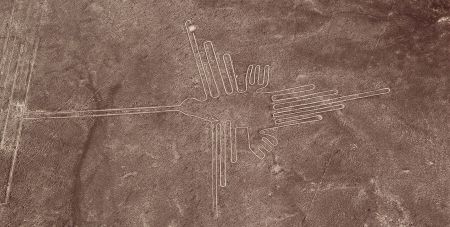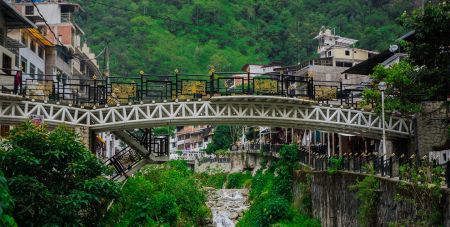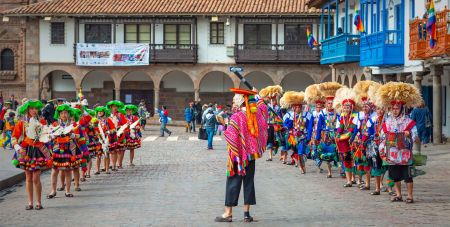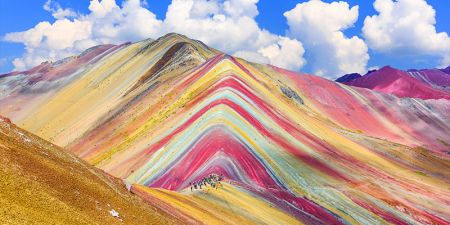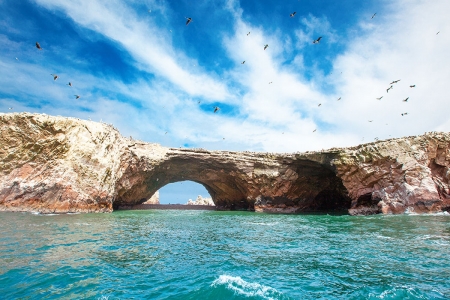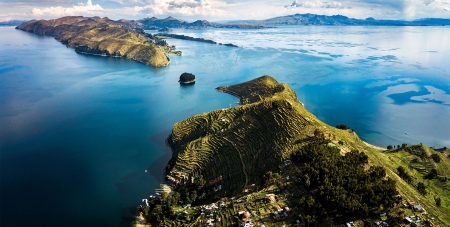Lake Titicaca: Unveiling the Mysteries of South America's Largest Lake
Discover the enchanting beauty and cultural significance of Lake Titicaca. Dive into the world's highest navigable lake, nestled amidst the breathtaking Andean landscape. From the floating islands of Uros to the ancient ruins of Tiwanaku, embark on a virtual journey to this captivating place. Explore the ecological wonders, unique wildlife, and sustainable tourism initiatives that make Lake Titicaca a true gem.
.jpg)
Nestled high in the Andes, straddling the border of Peru and Bolivia, sits Lake Titicaca, the highest navigable lake in the world. It's a place of incredible beauty and deep cultural significance, a jewel of South America that has captivated the hearts and minds of travelers for centuries. Lake Titicaca is not just a geographical marvel but also a rich tapestry of history, biodiversity, and indigenous cultures.
Lake Titicaca's allure lies not only in its size and elevation but also in the many mysteries that it holds. From the ancient ruins submerged beneath its azure waves to the fascinating cultures that reside on its shores and islands, Lake Titicaca is a place of discovery and wonder. This article aims to take you on a journey through this enchanting landscape, unveiling the myriad mysteries that make Lake Titicaca so special.
The Geography of Lake Titicaca
Lake Titicaca sits at an altitude of 3,812 meters (12,507 feet) above sea level, making it the highest navigable lake in the world. Covering an area of 8,372 square kilometers (3,232 square miles), it's also the largest lake in South America. The lake is divided into two sub-basins by the Strait of Tiquina, with the larger, deeper Lago Mayor (Greater Lake) to the northeast and the smaller, shallower Lago Menor (Lesser Lake) to the southwest.
The lake's waters are remarkably clear, with visibility up to 18 meters (60 feet) in some areas. The lake is fed by rainfall and meltwater from glaciers in the surrounding Andes Mountains, and it drains into the Desaguadero River, which flows south into Lake Poopó in Bolivia. The water in Lake Titicaca is relatively cold, with average temperatures ranging from 10 to 14 degrees Celsius (50 to 57 degrees Fahrenheit).
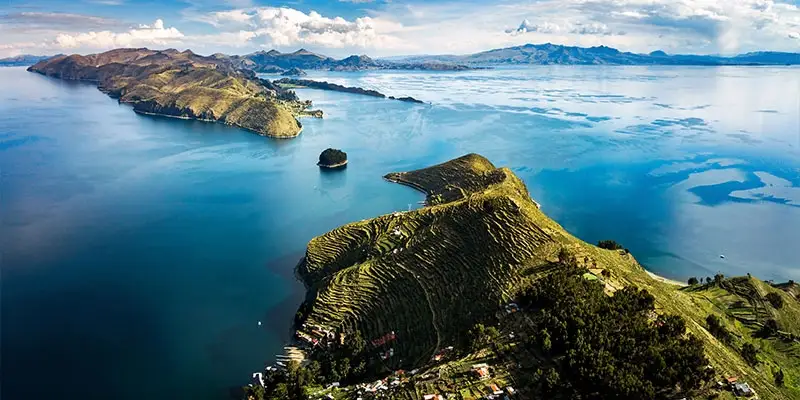
The History and Legends of Lake Titicaca
Lake Titicaca holds a significant place in Andean mythology. It's considered the birthplace of the sun in Inca mythology, and many Inca ruins can be found around the lake, including on the islands of the Sun and the Moon. The lake is also believed to be the birthplace of Manco Capac and Mama Ocllo, the mythical founders of the Inca Empire.
In addition to its mythical significance, Lake Titicaca has a rich archaeological history. The area around the lake has been inhabited for at least 8,000 years, and many ancient civilizations have left their mark on the landscape. From the mysterious Tiahuanaco culture, which thrived around the lake from 200 BC to 1000 AD, to the Inca Empire, which dominated the region in the 15th and 16th centuries, the history of Lake Titicaca is a fascinating tapestry of cultures and empires.
Customize Your Dream Vacation!
Get in touch with our local experts for an unforgettable journey.
Plan Your TripThe Unique Fauna and Flora of Lake Titicaca
Lake Titicaca is home to a diverse range of flora and fauna, many of which are endemic to the region. The lake's clear, cold waters support several species of fish, including the giant Titicaca water frog and the endangered Titicaca grebe. The lake's reed-filled shallows are also a haven for water birds, including flamingos, ducks, and herons.
The lake's islands and surrounding shores are covered with a unique high-altitude vegetation, including totora reeds, which are used by the local Uros people to build their floating islands and boats. The lake's high altitude and isolation have led to the evolution of many unique plant species, including the endemic Orestias fish, which have adapted to the lake's harsh conditions.
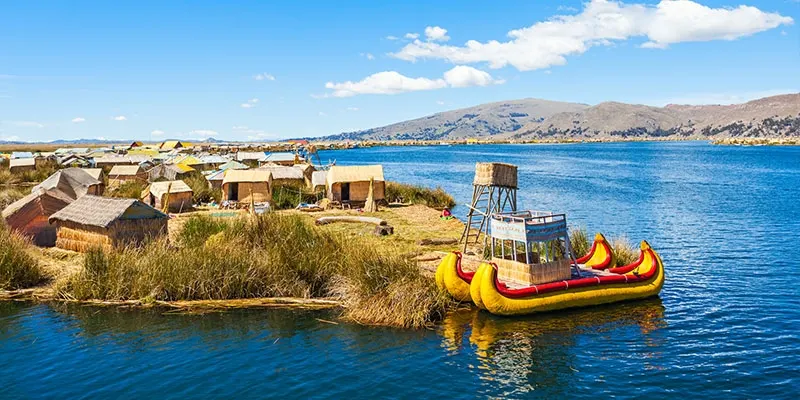
The Indigenous Cultures Surrounding Lake Titicaca
The shores and islands of Lake Titicaca are home to numerous indigenous cultures, including the Quechua, Aymara, and Uros peoples. These cultures have lived around the lake for centuries, maintaining traditional ways of life that are deeply interconnected with the lake's ecology.
The Uros people, for example, live on man-made floating islands constructed from totora reeds, which grow abundantly in the lake. They use the reeds for everything from building their homes and boats to making handicrafts and even as a food source. Despite the influence of the modern world, these indigenous cultures continue to live in harmony with the lake, preserving their traditions and customs for future generations.
Exploring the Islands of Lake Titicaca
Lake Titicaca is dotted with numerous islands, each with its unique charm and history. The largest and most visited are the Isla del Sol (Island of the Sun) and Isla de la Luna (Island of the Moon), both of which are steeped in Inca mythology and history.
The Island of the Sun is considered the birthplace of the sun in Inca mythology, and it's home to several important Inca ruins, including the Sacred Rock and the Inca's Fountain. The Island of the Moon, meanwhile, was a sacred place for Inca women and is home to the ruins of the Temple of the Virgins of the Sun.
Other notable islands include Amantani and Taquile, both known for their traditional cultures and beautiful hand-woven textiles, and the Uros Islands, a group of man-made floating islands constructed from totora reeds.
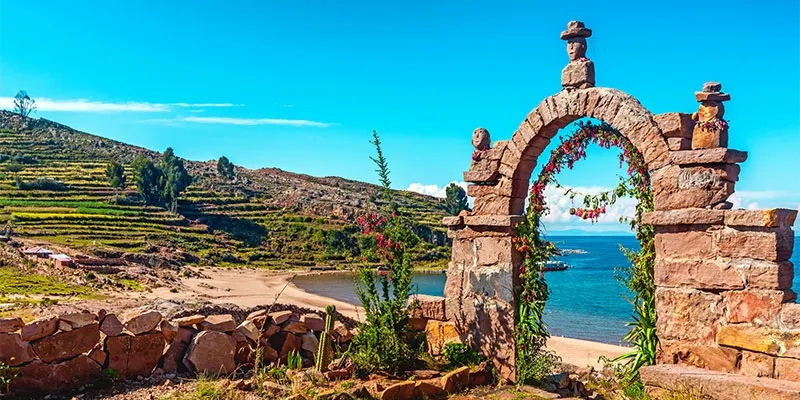
The Archaeological Treasures of Lake Titicaca
Lake Titicaca is a treasure trove for archaeologists, with numerous ruins and artifacts dating back thousands of years. The most famous archaeological site around the lake is the ancient city of Tiwanaku, located near the lake's southeastern shore.
Tiwanaku was the center of a powerful pre-Inca civilization that thrived around the lake from 200 BC to 1000 AD. The site includes several impressive stone structures, including the Akapana pyramid, the semi-subterranean Temple, and the Gate of the Sun, which is carved from a single block of stone and is considered one of the most important archaeological treasures in South America.
How to Reach Lake Titicaca
Lake Titicaca is accessible from both Peru and Bolivia. From Peru, the most common entry point is the city of Puno, which can be reached by bus or train from Cusco or Arequipa, or by flight from Lima. From Bolivia, the town of Copacabana is the main gateway to the lake and can be reached by bus from La Paz.
Once at the lake, there are numerous boat tours available to explore the lake's islands and attractions. These tours can be arranged in Puno or Copacabana, or through various travel agencies.
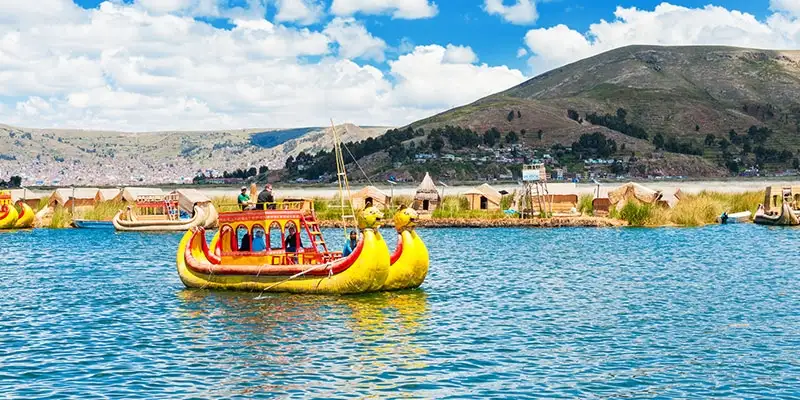
Activities and Attractions around Lake Titicaca
There's no shortage of activities and attractions to enjoy around Lake Titicaca. From exploring the lake's beautiful islands and indigenous cultures to visiting the ancient ruins of Tiwanaku, there's something for everyone.
Boat tours are a popular way to explore the lake, with many including visits to the Uros Islands, Taquile, and Amantani. Hiking is also popular on the islands of the Sun and the Moon, where you can explore ancient Inca ruins and enjoy stunning views of the lake.
Best Time to Visit Lake Titicaca
The best time to visit Lake Titicaca depends on your preferences. The dry season, from May to September, offers clear skies and cool temperatures, making it an ideal time for hiking and outdoor activities. However, this is also the busiest time of year, so expect larger crowds.
The wet season, from November to April, brings rain and clouds, but also fewer tourists and more vibrant landscapes, as the rain brings out the lush vegetation. No matter when you visit, Lake Titicaca promises an unforgettable experience.
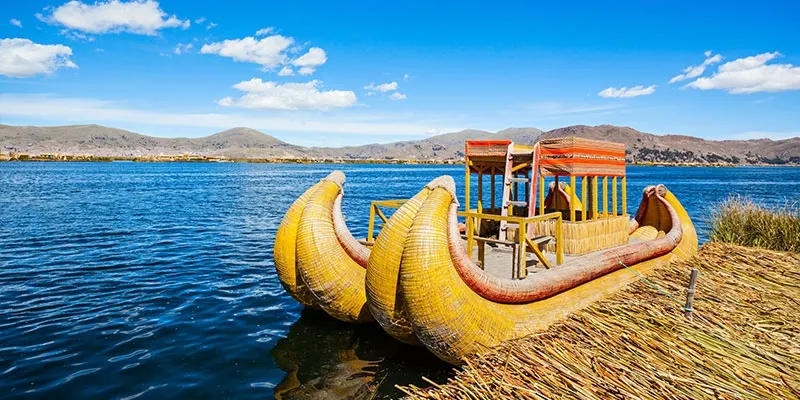
Traveling to Lake Titicaca: Practical Tips and Information
When traveling to Lake Titicaca, it's important to be prepared. The lake's high altitude can cause altitude sickness, so it's recommended to spend a few days acclimatizing in a high-altitude city like Cusco or La Paz before heading to the lake. Also, remember to dress in layers, as temperatures can vary greatly between day and night.
As for accommodations, there are numerous hotels and guesthouses in Puno and Copacabana, as well as homestays on some of the lake's islands. When it comes to food, don't miss the chance to try local specialties like trout from the lake or quinoa soup.
Eco-Tourism and Conservation Efforts at Lake Titicaca
As a unique and fragile ecosystem, Lake Titicaca faces numerous conservation challenges. Overfishing, pollution, and the introduction of non-native species are among the major threats to the lake's biodiversity.
In response to these challenges, several conservation initiatives have been implemented, including the creation of the Titicaca National Reserve in Peru and the Titicaca Lake Reserve in Bolivia. These reserves aim to protect the lake's unique ecosystems and promote sustainable tourism practices.
Eco-tourism is also being promoted as a way to support local communities and protect the environment. Many tours now focus on cultural immersion and environmental education, and there are opportunities for visitors to participate in conservation projects and learn about the local ecology.
The Mysteries and Wonders of Lake Titicaca
Lake Titicaca is a place of immense beauty and cultural richness, a testament to the enduring spirit of the Andean people and the majesty of the natural world. From its clear, blue waters to its ancient ruins and vibrant indigenous cultures, Lake Titicaca is a destination that captivates, inspires, and leaves a lasting impression.
As we unveil the mysteries of this enchanting lake, we are reminded of the importance of preserving these unique landscapes for future generations. Whether you're an adventurer, a history buff, or simply a lover of nature, Lake Titicaca promises an unforgettable journey of discovery and wonder.
Enjoy the beauty and mystery of Lake Titicaca with our Peru tours. Explore the ancient ruins, immerse yourself in the local cultures, and witness the lake's unique biodiversity. Book your tour today and experience the magic of Lake Titicaca for yourself. Discover the wonders of South America's largest lake with our Peru tours.
People Also Ask Questions about Lake Titicaca
Where is Lake Titicaca located?
Lake Titicaca is located on the border of Bolivia and Peru in the Andes Mountains.
What is the size of Lake Titicaca?
Lake Titicaca has a surface area of approximately 8,372 square kilometers (3,232 square miles).
What is the significance of Lake Titicaca?
Lake Titicaca is significant for its cultural and historical importance, being considered the birthplace of the Inca civilization and home to indigenous communities with unique traditions.
What are the main tourist attractions around Lake Titicaca?
The main tourist attractions around Lake Titicaca include the Uros Floating Islands, Taquile Island, Amantani Island, the city of Puno, and the Inca ruins of Sillustani.
Are there any islands on Lake Titicaca?
Yes, there are several islands on Lake Titicaca, including the Uros Islands, Taquile Island, and Amantani Island.
Can you swim in Lake Titicaca?
Yes, swimming is possible in Lake Titicaca, although the water can be quite cold due to the high altitude and mountain climate.
Is Lake Titicaca a freshwater lake or a saltwater lake?
Lake Titicaca is a freshwater lake.
Are there any endangered species in Lake Titicaca?
Lake Titicaca is home to several endangered species, including the Titicaca water frog and the Titicaca grebe.
How high above sea level is Lake Titicaca?
Lake Titicaca is located at an elevation of approximately 3,812 meters (12,507 feet) above sea level.
How deep is Lake Titicaca?
The maximum depth of Lake Titicaca is around 281 meters (922 feet).
What is the weather like around Lake Titicaca?
The weather around Lake Titicaca can vary, but it is generally cool and dry due to the high altitude. Summers are typically mild, while winters can be cold and windy.
Are there any traditional festivals or events celebrated on Lake Titicaca?
Yes, there are traditional festivals and events celebrated on Lake Titicaca, including the Virgen de la Candelaria festival in Puno, which features colorful parades, dances, and music.
Can you visit the Uros Floating Islands on Lake Titicaca?
Yes, the Uros Floating Islands can be visited by tourists. These artificial islands are made of reeds and are home to the Uros people, who maintain their traditional way of life and welcome visitors.

